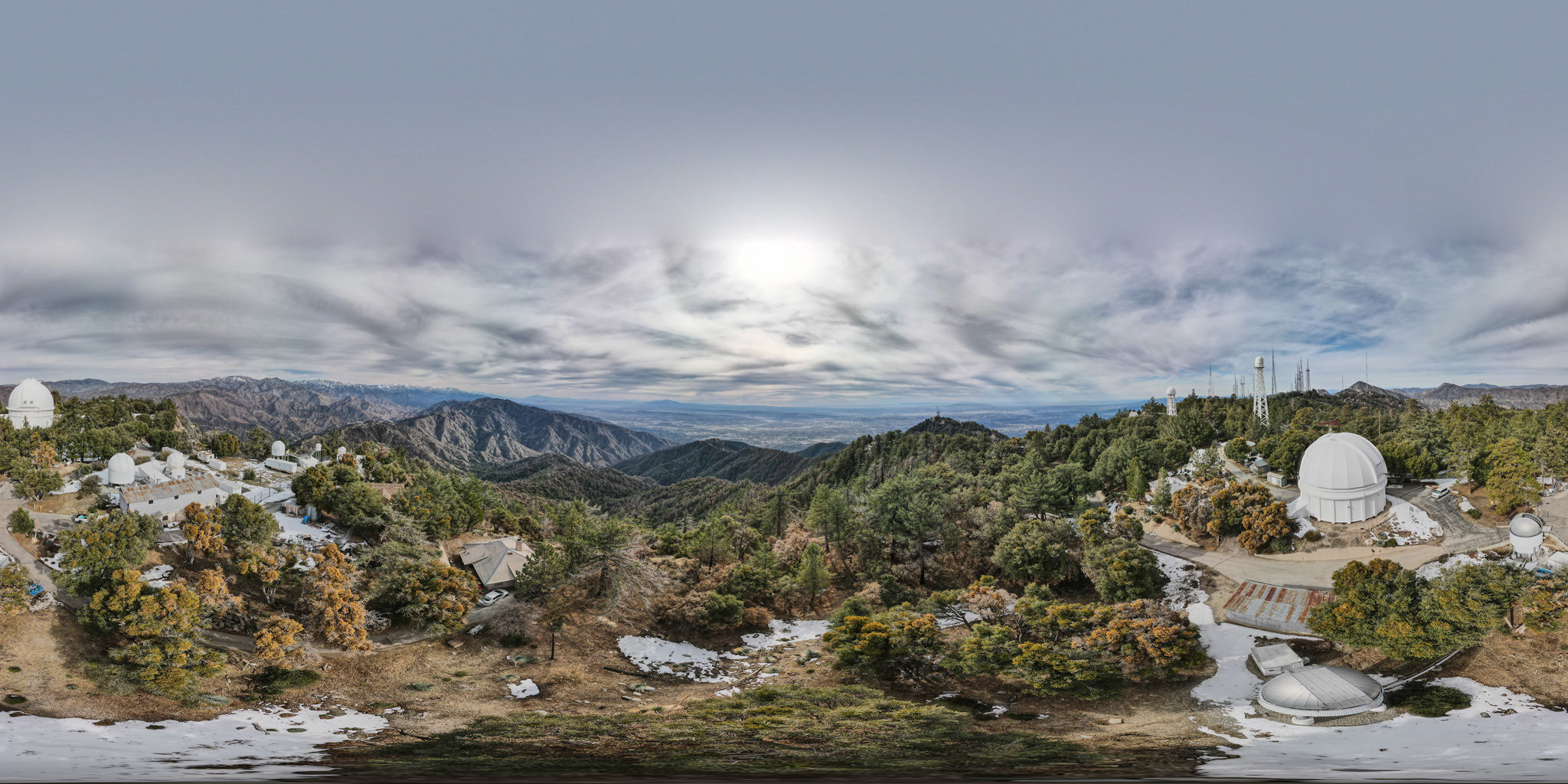
Recent technical & scientific highlights from the CHARA Array
Nic Scott
(on behalf of Douglas Gies)








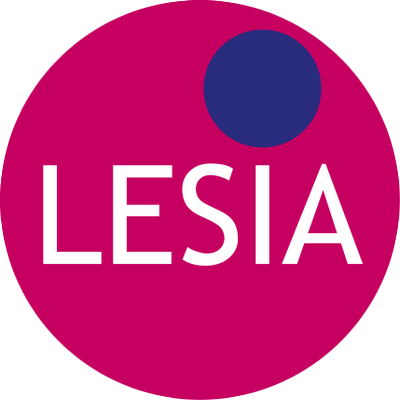



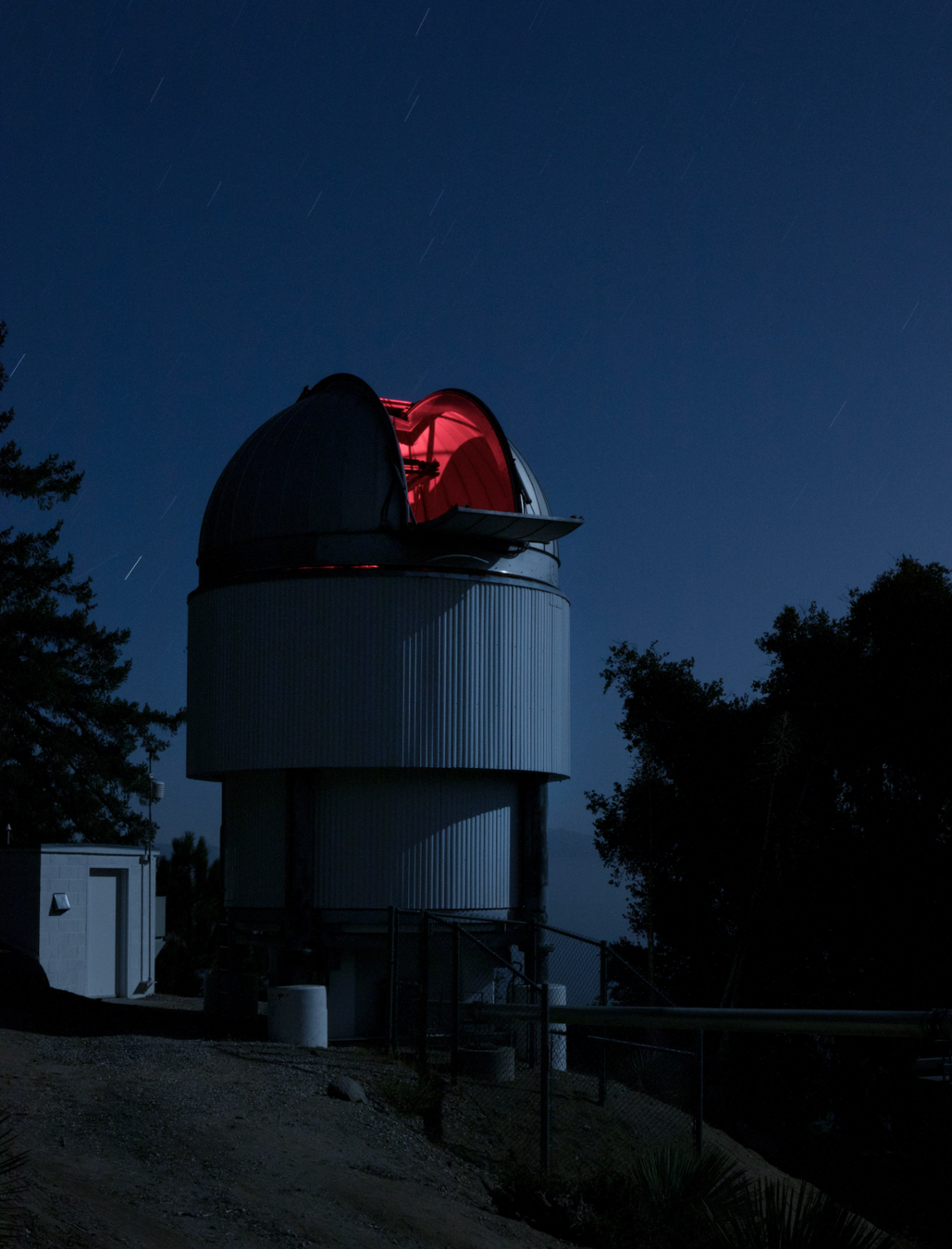
SPIE Astro 2024 Paper 13095-1

Center for High Angular Resolution Astronomy
Georgia State University, Atlanta
Director: Douglas Gies
CHARA Array
Mount Wilson Observatory, California
Director: Gail Schaefer
16 staff members onsite
Operations funded through the NSF, GSU, collaboration partners












X
Introduction

The Array is capable of resolving details as small as 200 micro-arcseconds, equivalent to the angular size of a coin seen from a distance of 10,000 miles (16,000 km).




the CHARA Array
"the CHARA Array continues to offer exceptional opportunities for scientific discovery using the longest operating baselines in the world among optical/near-IR interferometers"

Spatial resolution
• 0.20 mas at R (650 nm)
• 0.52 mas at H (1.67 μm)
• 0.66 mas at K (2.13 μm)
34 to 331m
- 15 baselines
- 10 closure triangles
Georgia State University
The CHARA Array is operated by the Center for High Angular Resolution Astronomy at Georgia State University in Atlanta.
The two-telescope CLASSIC beam combiner
University of Michigan
The MIRC-X H-band combiner. A six-telescope cryogenic K-band beam combiner, MYSTIC
University of Exeter
The upgrades to the six-telescope MIRC-X combiner
l’Observatoire de la Côte d’Azur
SPICA combines all six-telescopes and provides a range of spectral dispersions at visible wavelengths.
Sydney University
Precision Astronomical Visible Observations (PAVO) instrument
Australian National University
The (PAVO) visible beam combiner
Université de Limoges
the ALOHA fiber experiment.
Kyoto Sangyo University
Pushing the sensitivity limits of the Array in order to resolve the cores of Active Galactic Nuclei.
National Optical-Infrared Astronomy Research Laboratory
Open access time at the CHARA Array is available to the astronomical community through the National Optical-Infrared Astronomy Research Laboratory (NOIR Lab).
The CHARA Consortium













CHARA Science meeting 2023 - Atlanta, GA
CHARA Science meeting 2024 - Tucson, AZ


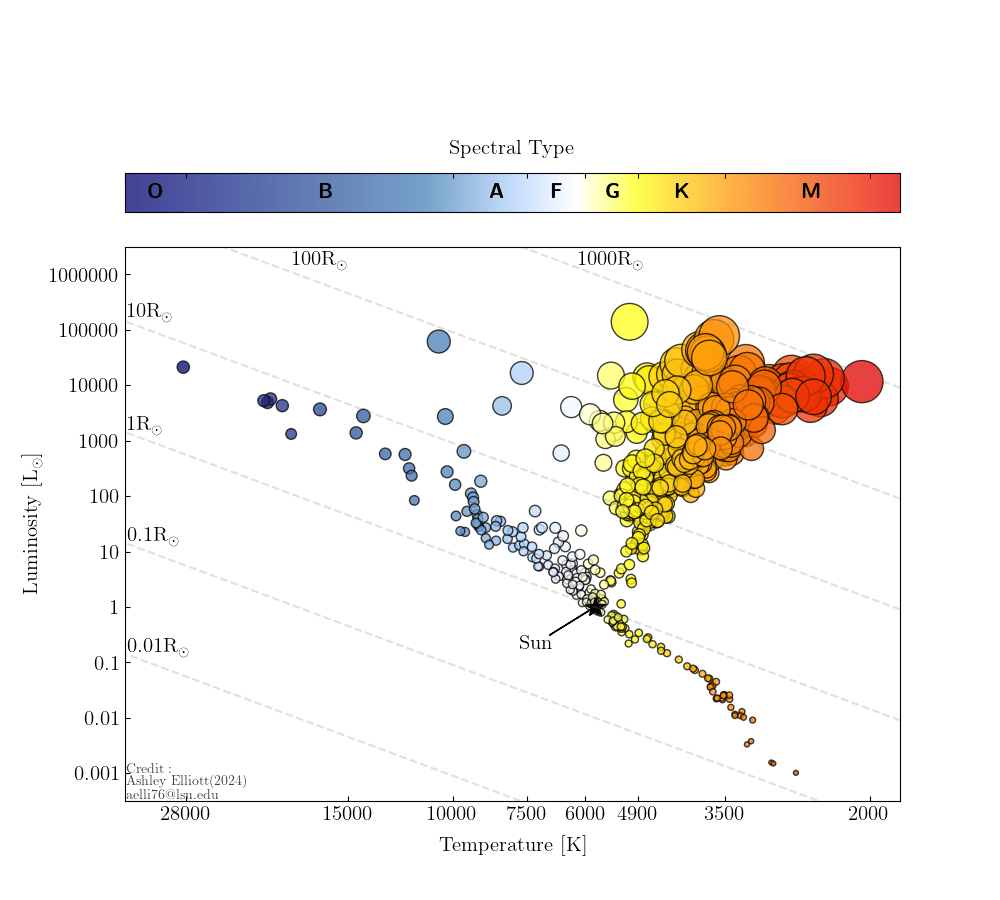
Ashley Elliott 2024
Diameters of Stars
Ashley Elliott (LSU) has compiled interferometric measurements from CHARA and more to create an empirical HR diagram.
Angular Dia. + Parallax → Linear Radius
Diameter + Bolometric Flux → Teff
- masses and ages from evolutionary tracks/isochrones
- evolutionary models
- color-magnitude relations
- surface brightness relations
- asteroseismic scaling relations
SCIENTIFIC RESULTS

interferometric angular diameters provide key benchmark data to evaluate calibrations of effective temperature from large-scale spectroscopic and photometric surveys - SED/CHARA
693 stars, σθ < 5%


Binary & Multiple Stars
Castor A and B
- resolved the inner binary components
- masses and 3D orbits
- mutual orientations of the different components.
HD 284163
hierarchical quadruple system
- orbits of the inner (2.39 d) and first outer (43.1 yr) are nearly orthogonal
- Accurate masses including that of the secondary
- (0.5245 ± 0.0047 M⊙) is now the lowest mass star with a dynamical mass measurement in the Hyades cluster.


Binary & Multiple Stars
ARMADA astrometry survey to search for triple systems among known intermediate mass binaries.
- ~ 20 - 50 μas residuals
- potentially could detect Jupiter-mass exoplanets in binaries.
new orbits of 12 companions around early F- to B-type binaries,
- 9 new detections
- 3 first astrometric detections of known RV companions.

Complementary radial velocity measurements for some of these systems yield very reliable mass estimates.


Binary & Multiple Stars
The origin of the rapid spin of the emission line Be stars is a long-standing mystery that may involve prior mass transfer in an interacting binary. These companions are the stripped-down remnants of the former, more massive companion that transferred mass and angular momentum to the Be star through Roche lobe overflow.
- MIRC-X survey of a sample of nearby Be stars
- 7 new binary systems (subdwarf companions + orbits)
3D orbits through combined spectroscopic and astrometric orbit fitting to determine stellar masses at this hitherto unseen stage of binary star evolution.
Be star HR 2142

Gleise 486
- M3.5 V star at ~8 pc
- transit every 1.467 days.
- MIRC-X → angular size of the the host star
- physical radius and effective temperature.
- transit light curve → ratio of planetary to stellar radius
- exoplanet diameter
- HPRV captured the reflex motion of the star and led to an exoplanet mass
- model of the interior structure and possible atmosphere of this other world in the solar neighborhood.
Exoplanet Systems
Interferometric observations of exoplanet host stars provide the means to determine the detailed stellar characteristics that are required to find the exoplanet properties.
- Radius and Teff of host
- Mass + age from evolutionary tracks
- Size of habitable zone
- Radius of transiting planets


Exoplanet Systems
Planet formation is generally considered in the context of young stars, but mass loss in older stars may also play a role in making planets at the end of a star's life.
Circumbinary disk with close to a polar alignment with respect to the binary orbit.
- Any planet formed in the disk would be relatively stable.
- central cavity in the disk could be result of such a planet.
If so, represents the first example of a polar circumbinary planet.


Image credit: Dr Mark A. Garlick / markgarlick.com
post-AGB star AC Her
- binary system
- surrounded large disk of gas and dust.
- Anugu determined the first 3D orbit for AC Her
- first for any post-AGB system
→ the large cavity in the center of the circumbinary disk is not created by the tidal action of the central binary.
Imaging Luminous Stars
The cool hypergiant star RW Cep experienced a Great Dimming event in 2022:
- imaged near photometric minimum
- H & K-band images show an asymmetric intensity distribution and a distorted shape
- NIR spectroscopy found fading increased towards shorter wavelengths
- implicates dust formation from stellar ejecta as the explanation for the fading and unusual appearance.


Patchy appearance results from dust created by a huge ejection from the star

Illustration credit: NASA, ESA, and E. Wheatley (STScI)
Anugu and colleagues are continuing to monitor the star with CHARA to explore how the surface appearance changes as the star brightens again.
What causes 1.2 mag
drop in V-band flux?

Disks Around Young Stars
The disks around T Tau type and other Young Stellar Objects (YSOs) are the birthplaces of planets, and interferometric imaging offers important clues about the environments surrounding planet formation.


SU Aur
MIRC-X observations of to build a model of the circumstellar disk's geometric and physical properties.
- inclined and warped
- flux mainly comes from the illuminated far side of the disk
- near side partially obscures the central star
- dust emission indicate formation of a disk wind from the upper and lower boundaries of the warped disk.

Disks Around Young Stars
The process of planet formation involves the development of instabilities in the disk that can be followed through time series interferometric observations at very high angular resolutions.
luminous Herbig Be star HD 190073
- YSO disk is viewed almost face-on (i<20°)
- clear view of the full extent of the inner gas disk.
- discovered a bright spot in the disk that migrated by 27° over of 32 days
V1925 Aql

NGC 4151
Active Galactic Nuclei
bright central region of the active galactic nucleus of the Seyfert galaxy NGC 4151.
- Central structure resolved at the 0.5 mas scale.
- ring-like structure viewed at an inclination of 40°
- perpendicular to the radio jet
- K-band flux probably originates in a dust sublimation region on the face of the torus surrounding the black hole.

CMAP
(CHARA Michelson Array Pathfinder)

Mobile Telescope Transport (TR116)
Recent Technical Developments

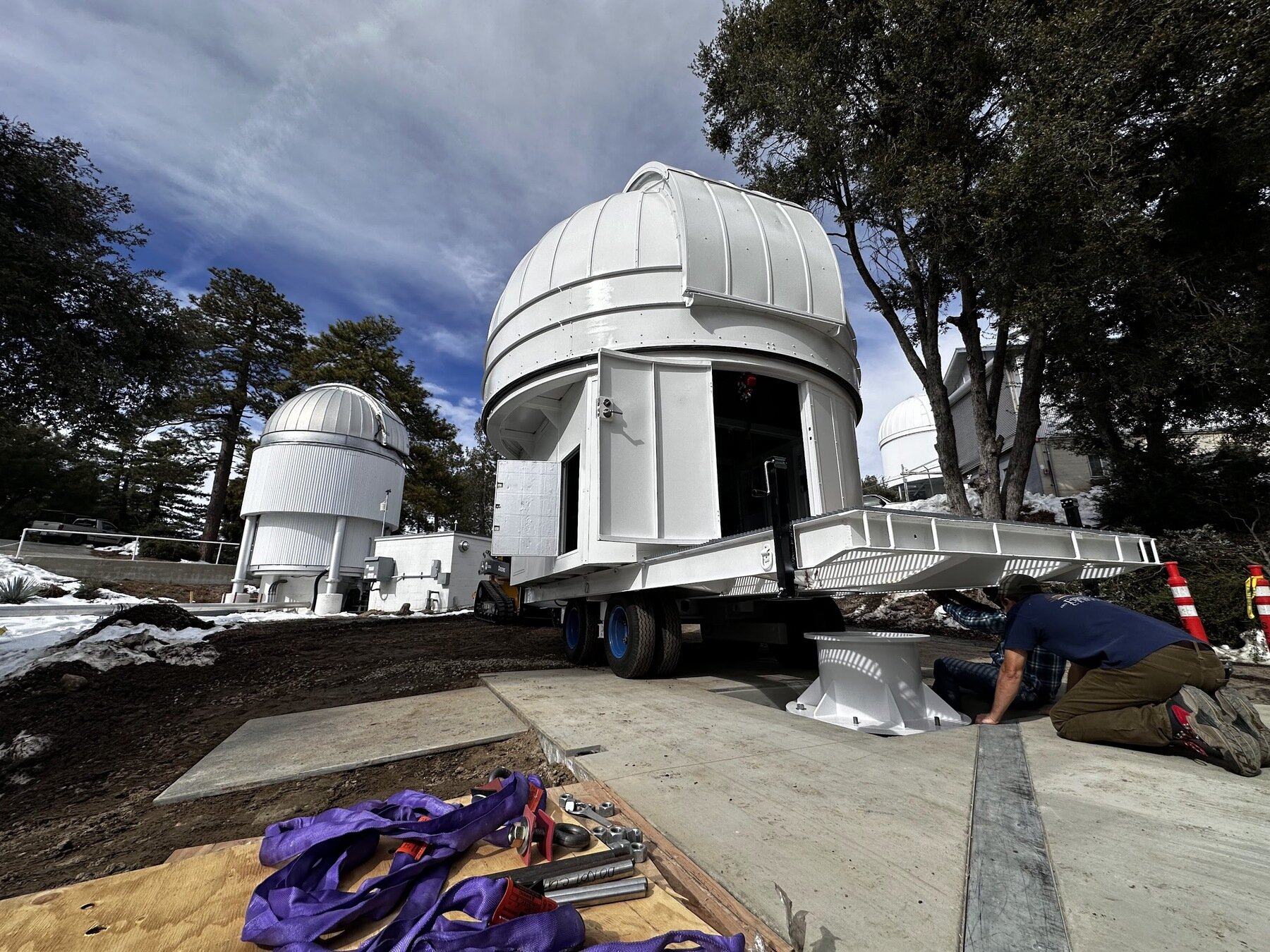
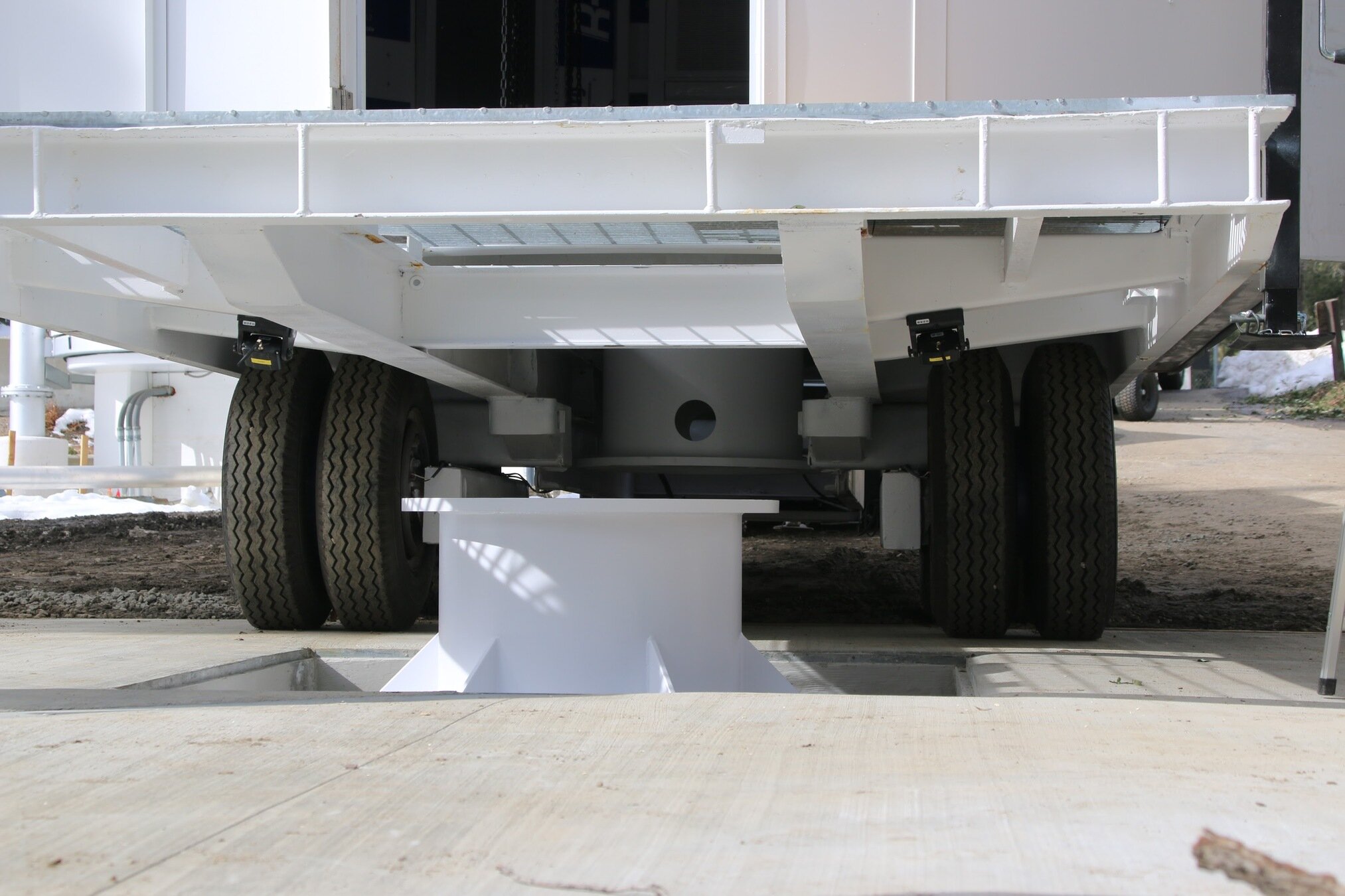
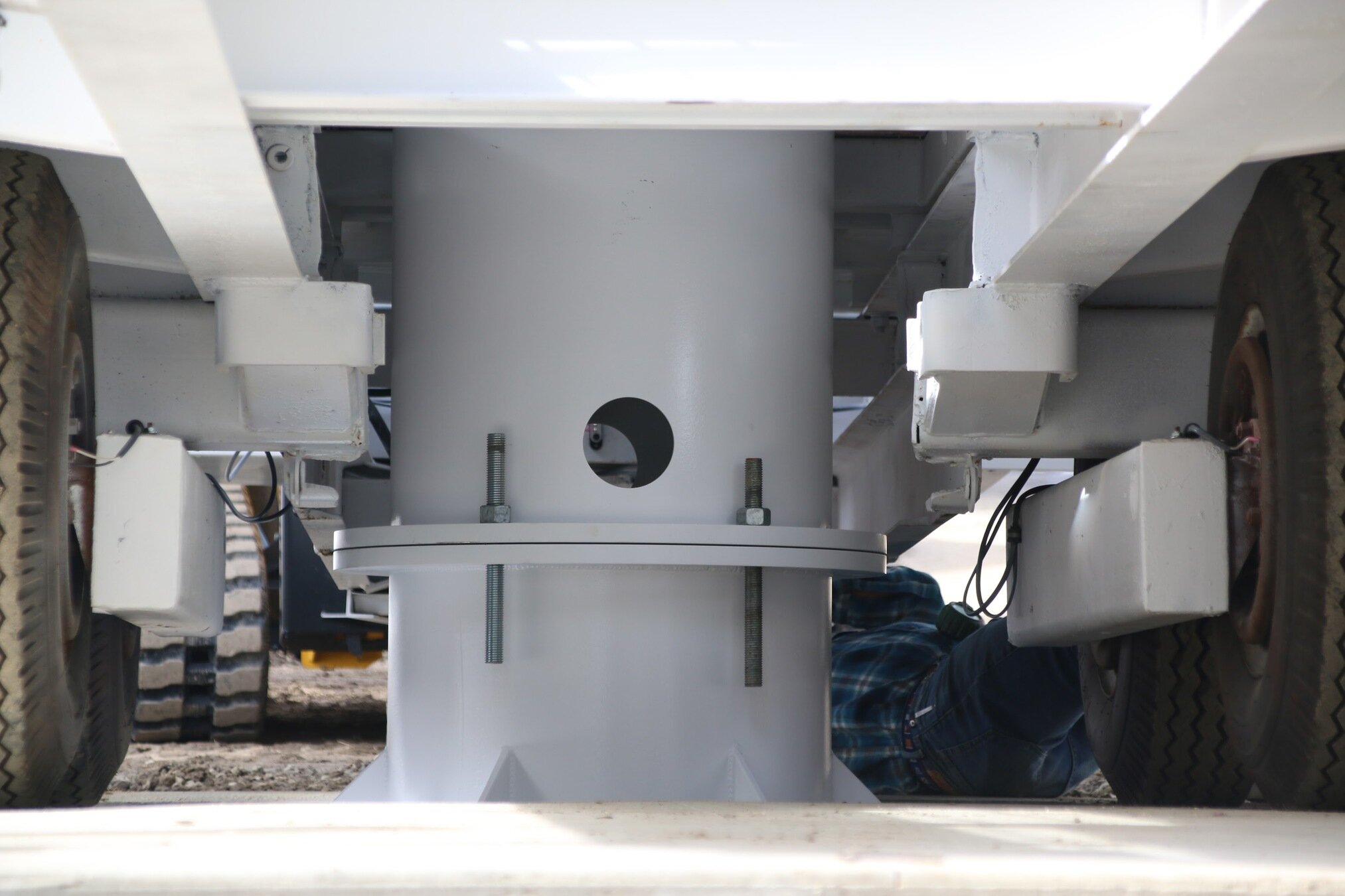
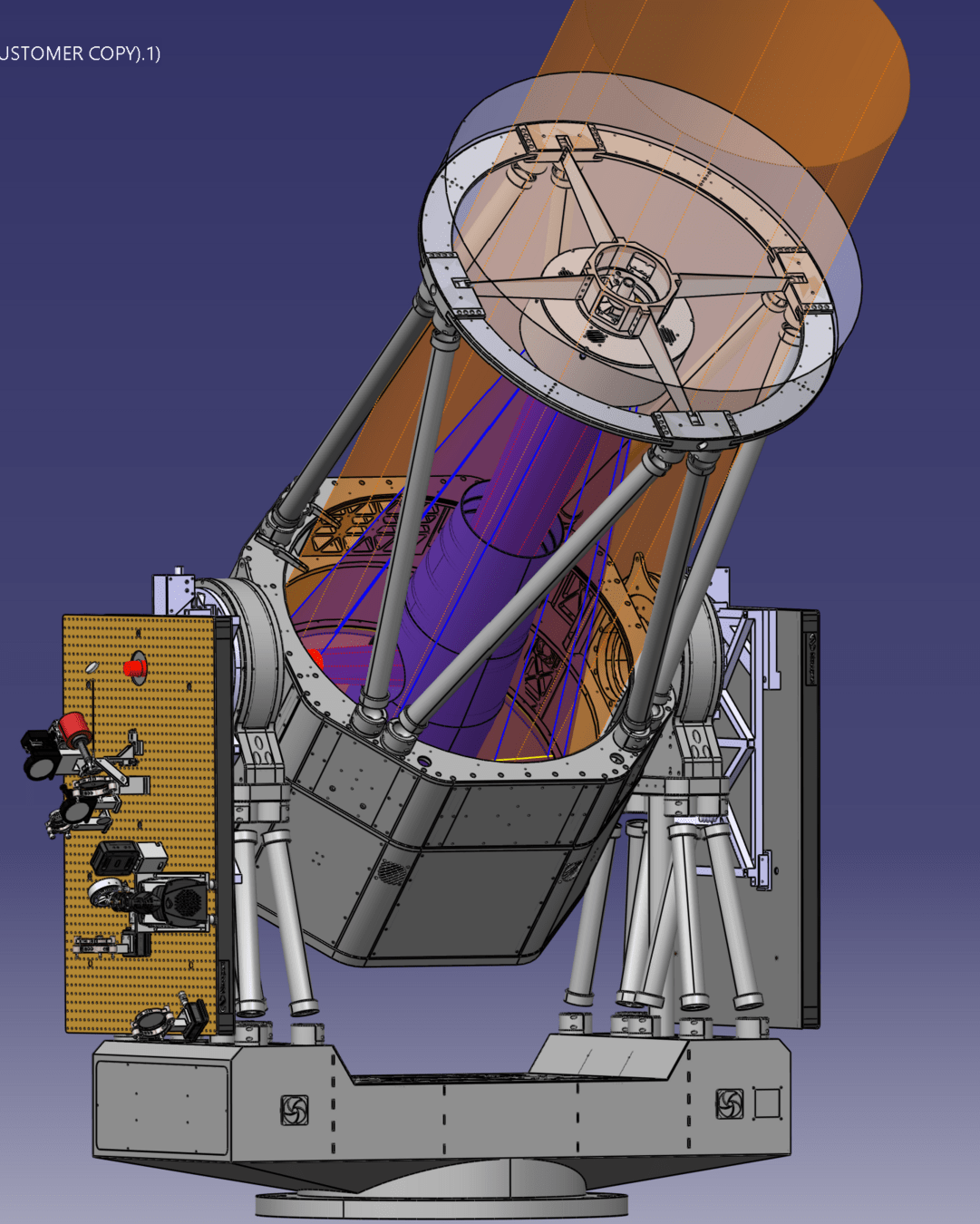
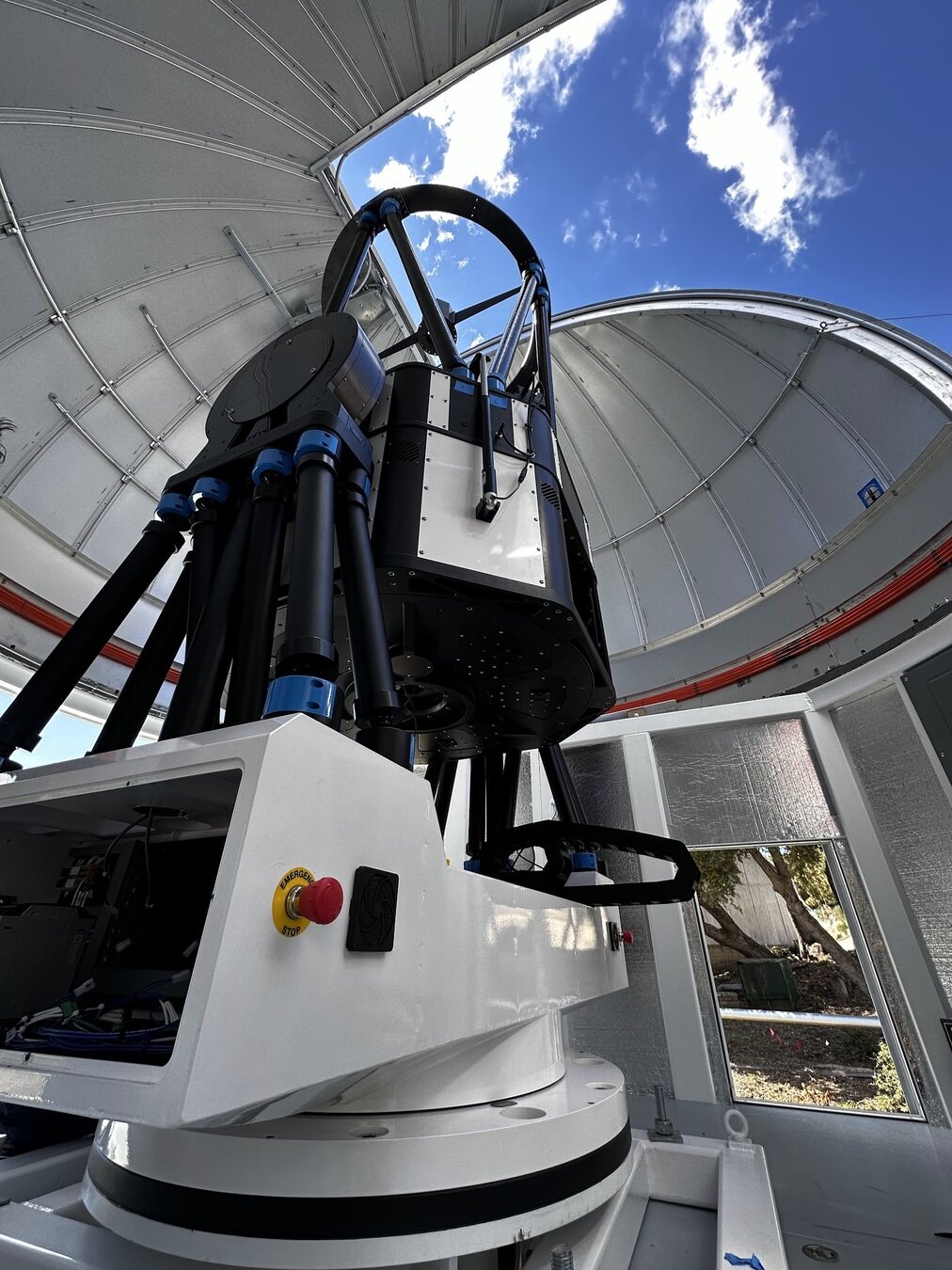

Planewave RC telescope
AOB
fiber injection

S4
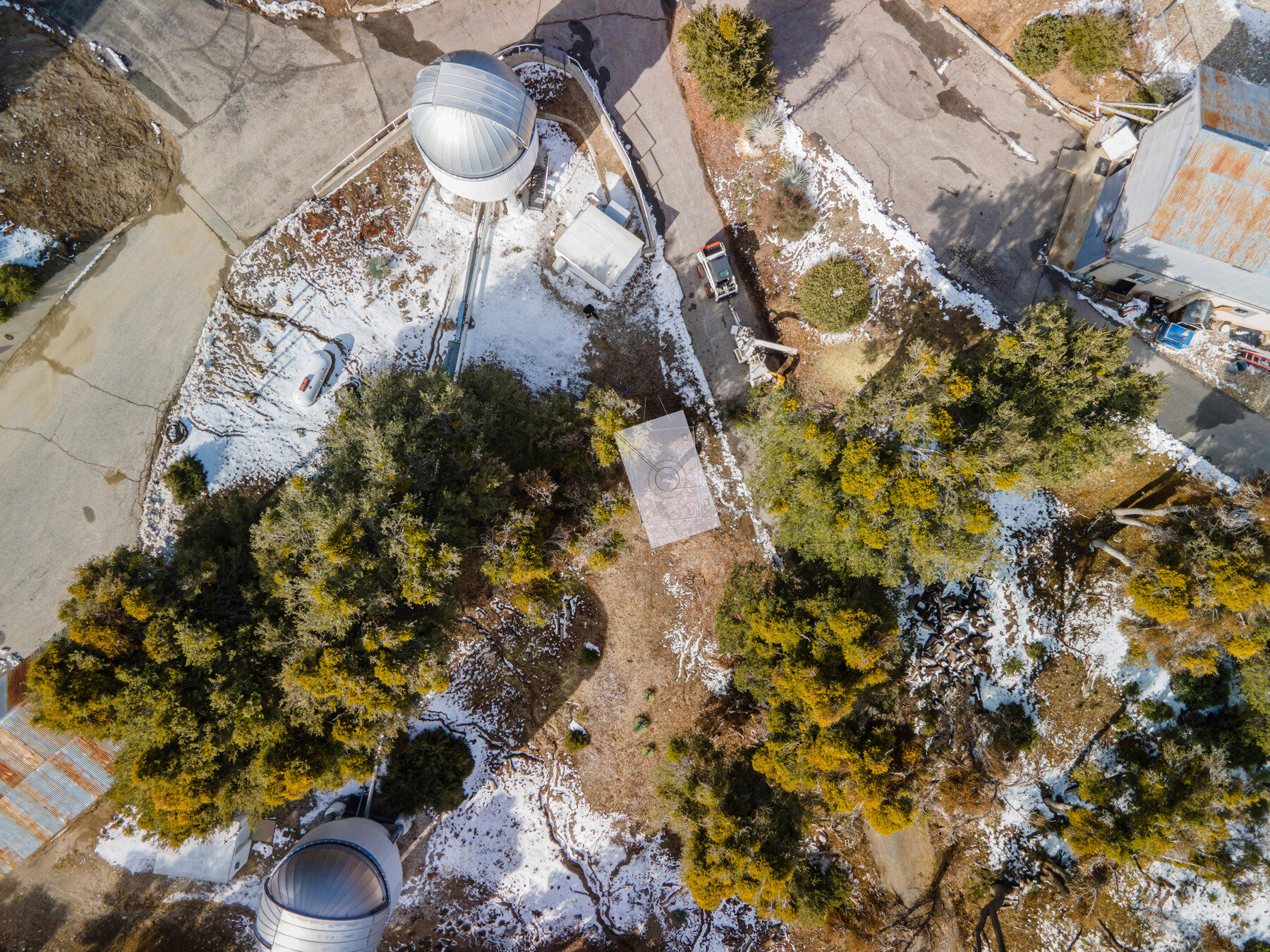
S3
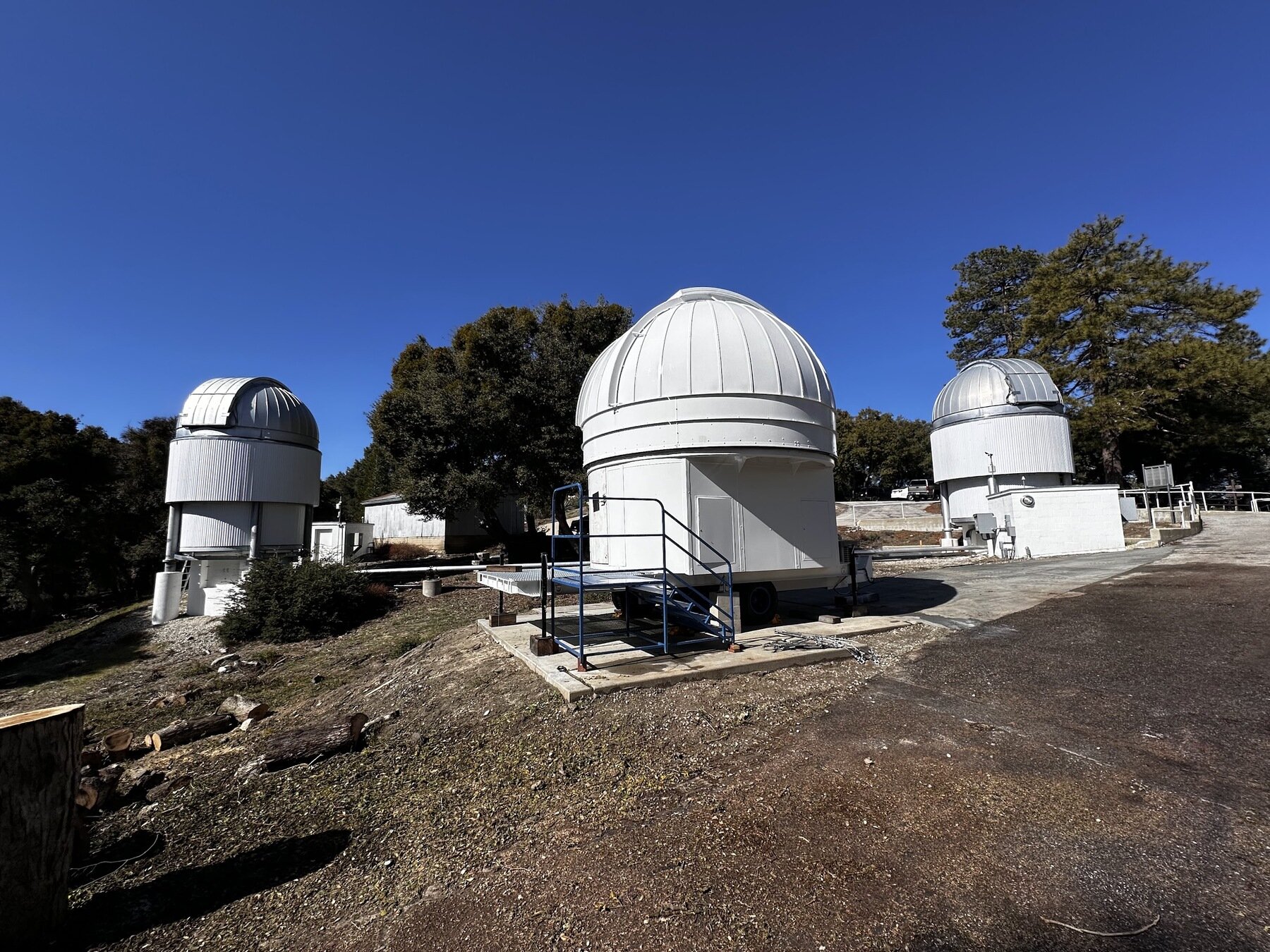
ALOHA – Univ. Limoges
Single-mode PM fibers
λ=810 nm, 240 m long
Laying on the ground
Connect S1+S2
On-sky fringes
Magri, Grossard, Reynaud et al. (submitted)
CMAP
Single-mode PM fibers
λ=1.6 μm, 650 m long
Trench: 18 inches deep



new improvements on the way
- drives
- cylinder control
- spycams
- environmental sensing

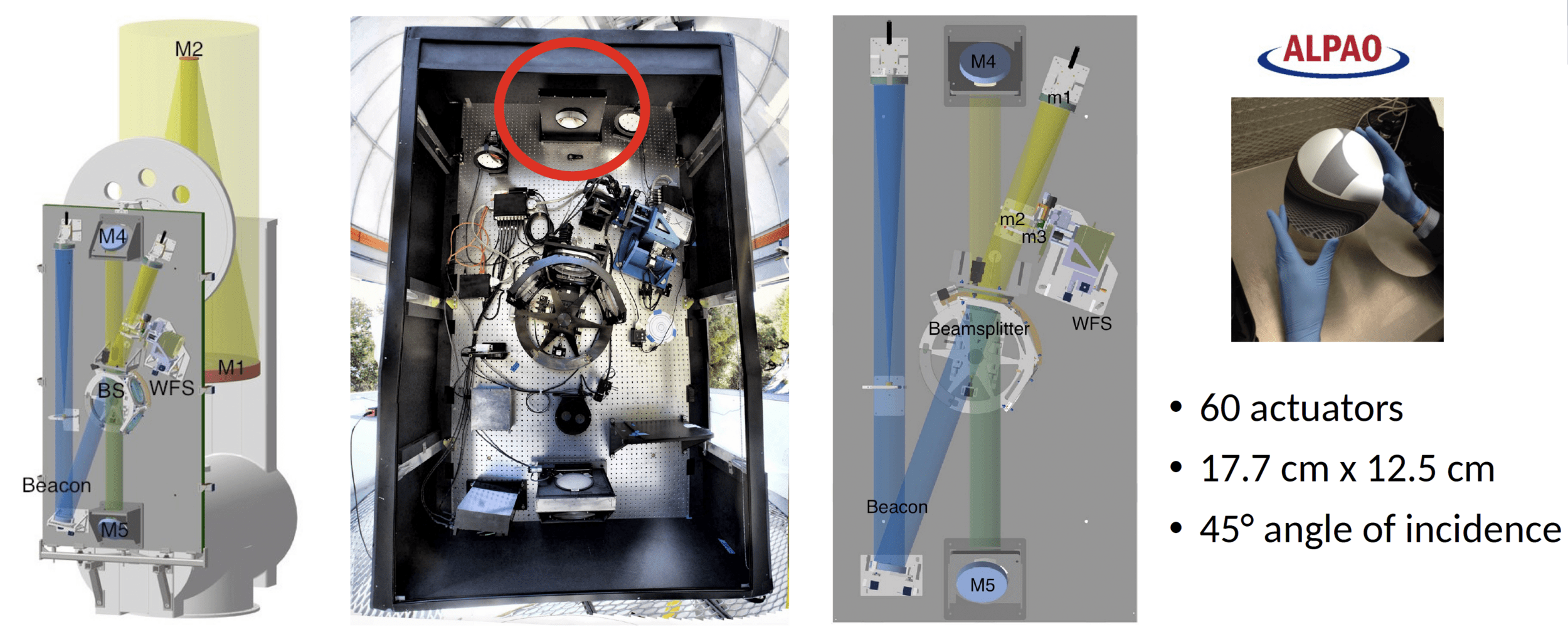
TelAO
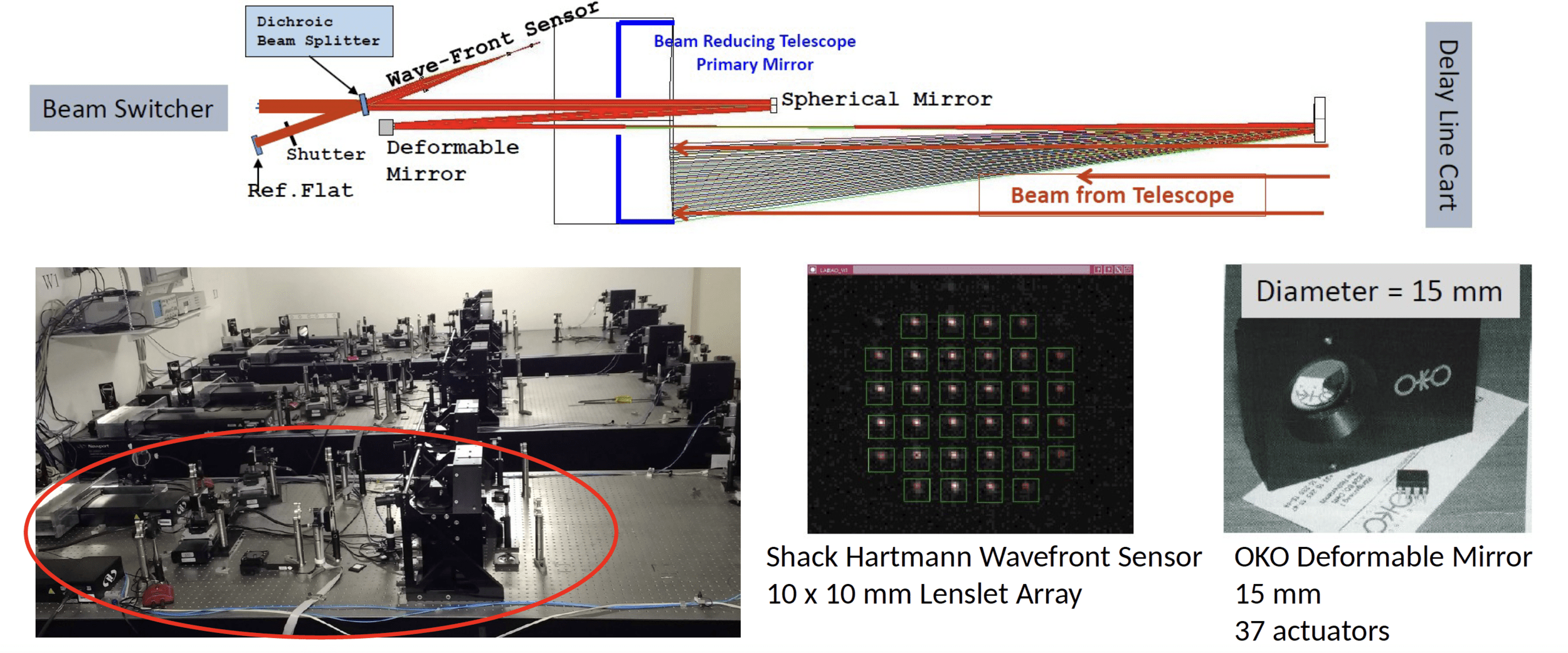
LabAO
WFS
phase
DM
(500 frame avg of cal source)
image
new AO software


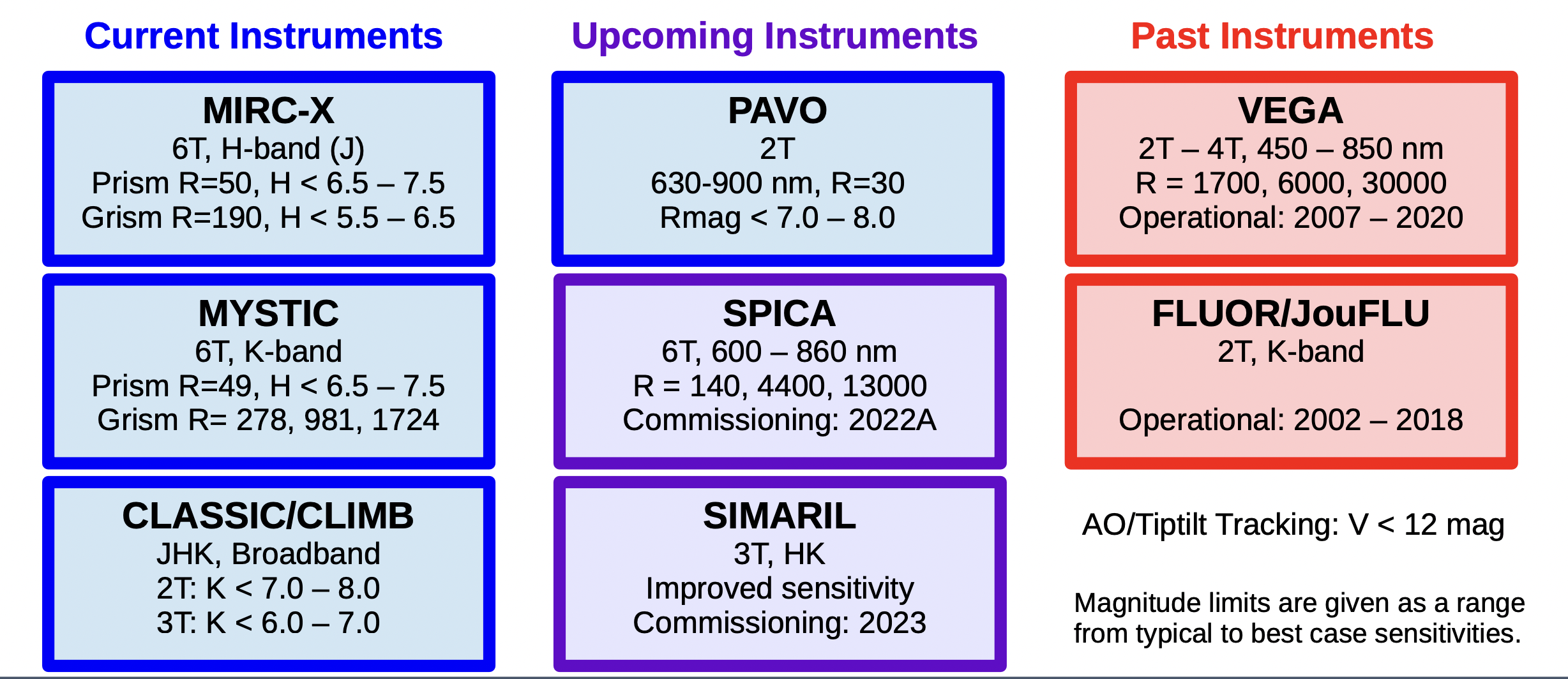
Beam Combiners
MIRC-X/Mystic
MIRC-X
- dispersed spectral channels
- J and H-bands
- MIRC-X/MYSTIC can be used simultaneously
- images of stellar surfaces and circumstellar disks
- precision closure phases
- faint binary companions.


STS & STST
MYSTIC (the Michigan Young STar Imager at CHARA)
- K-band, cryogenic, 6-beam combiner
- All-in-One 6T or high sensitivity 4T gravity chip
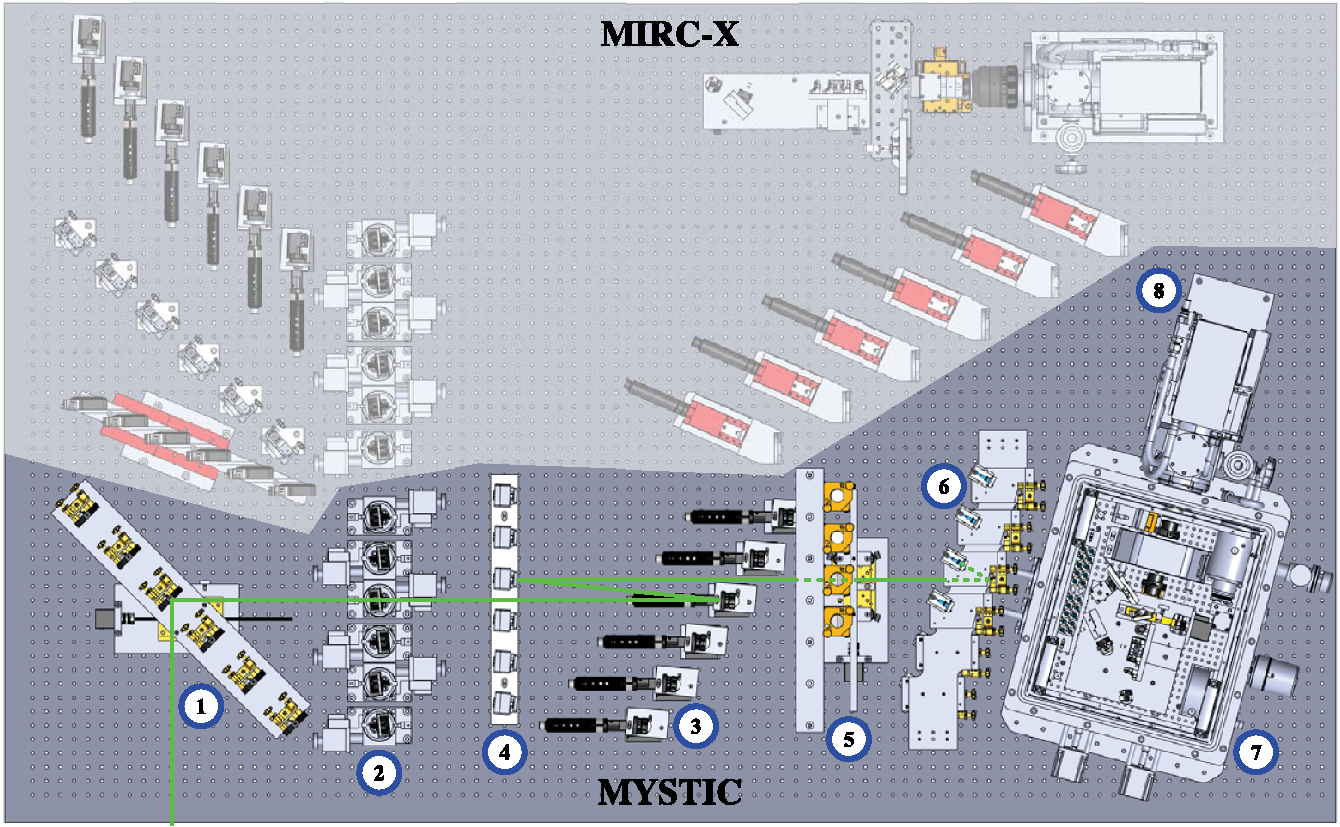
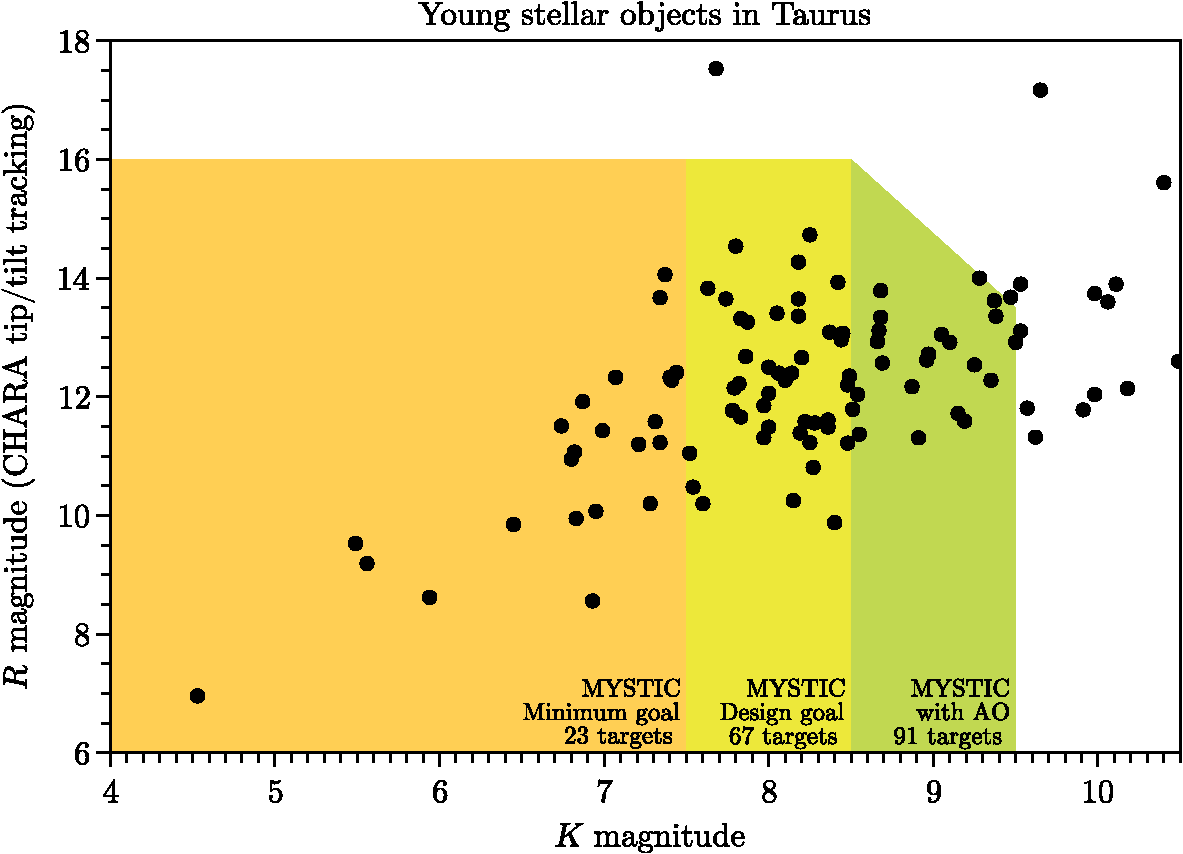
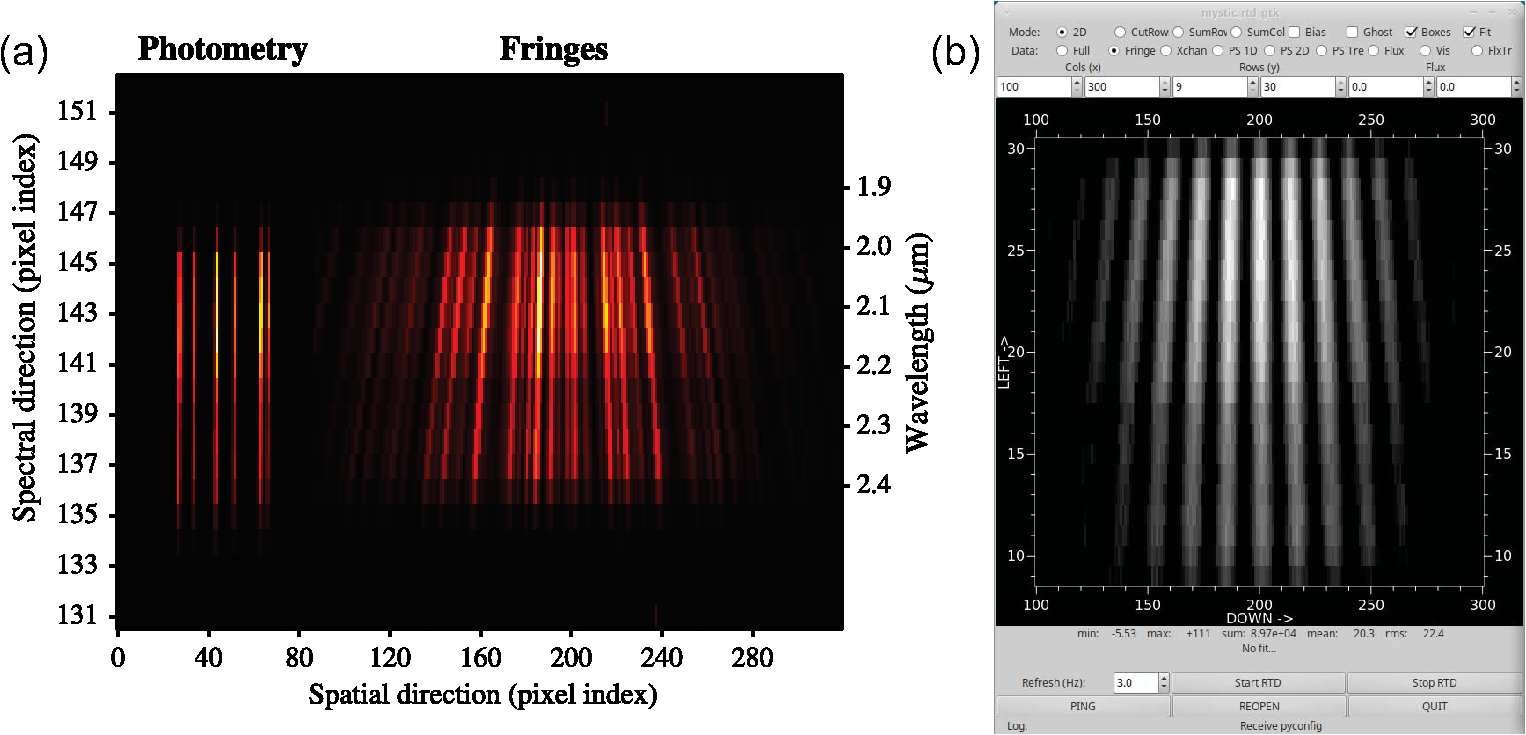


SILMARIL

Aug 2023 - First fringes
- 3T combiner (ten Brummelaar, Tuthill, Lanthermann)
- Designed for high sensitivity and faint targets
- CRED-1 coming

SPICA
(Stellar Parameters and Imaging with a Cophased Array)

SPICA-FT H-band 6-beam ABCD combiner by VLC Photonics, inspired by GRAVITY
low-resolution mode uses MIRC-X for fringe-tracking
The goal of the SPICA project is to provide a large and homogeneous set of stellar parameters across the HR-diagram. - measure the angular diameters of 1000 stars.

spectrograph


Aug 2023 - First fringes with SPICA/MIRC-X/MYSTIC
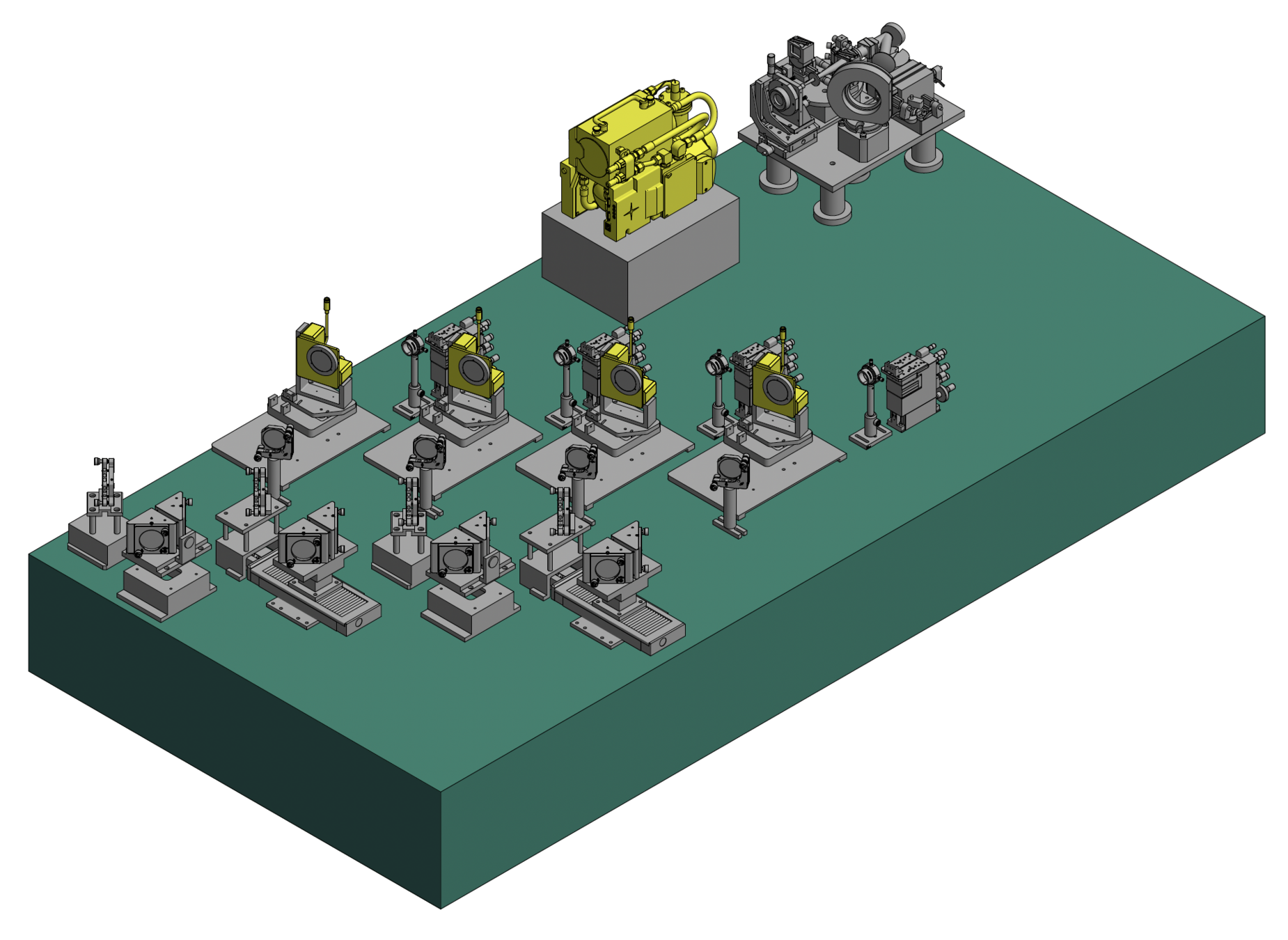
Currently two injection stages
CHARIOT
(CHARA Array Integrated Optics Testbed)
collaboration with Leibniz Institute for Astrophysics Potsdam (AIP)
ULI optics for JHK bands
(Siliprandi, Labadie, Madhav, Dinkelaker, Thompson, Benoît)



Apr 2024 - First fringes
Future Plans
- telescope dichroic upgrade
- automated alignment/tracking
- upgrade labAO system
- fibers to all telescopes
- W5/Channel 13 site (1100m)
- double-pass delay
- up to 300 nights over three years of open access time via NOIRLab.
-
optimize simultaneous observations in visible + NIR
- central 2m telescope
- upgrade existing 1m telescopes to 2m telescopes
- The Michelson Array


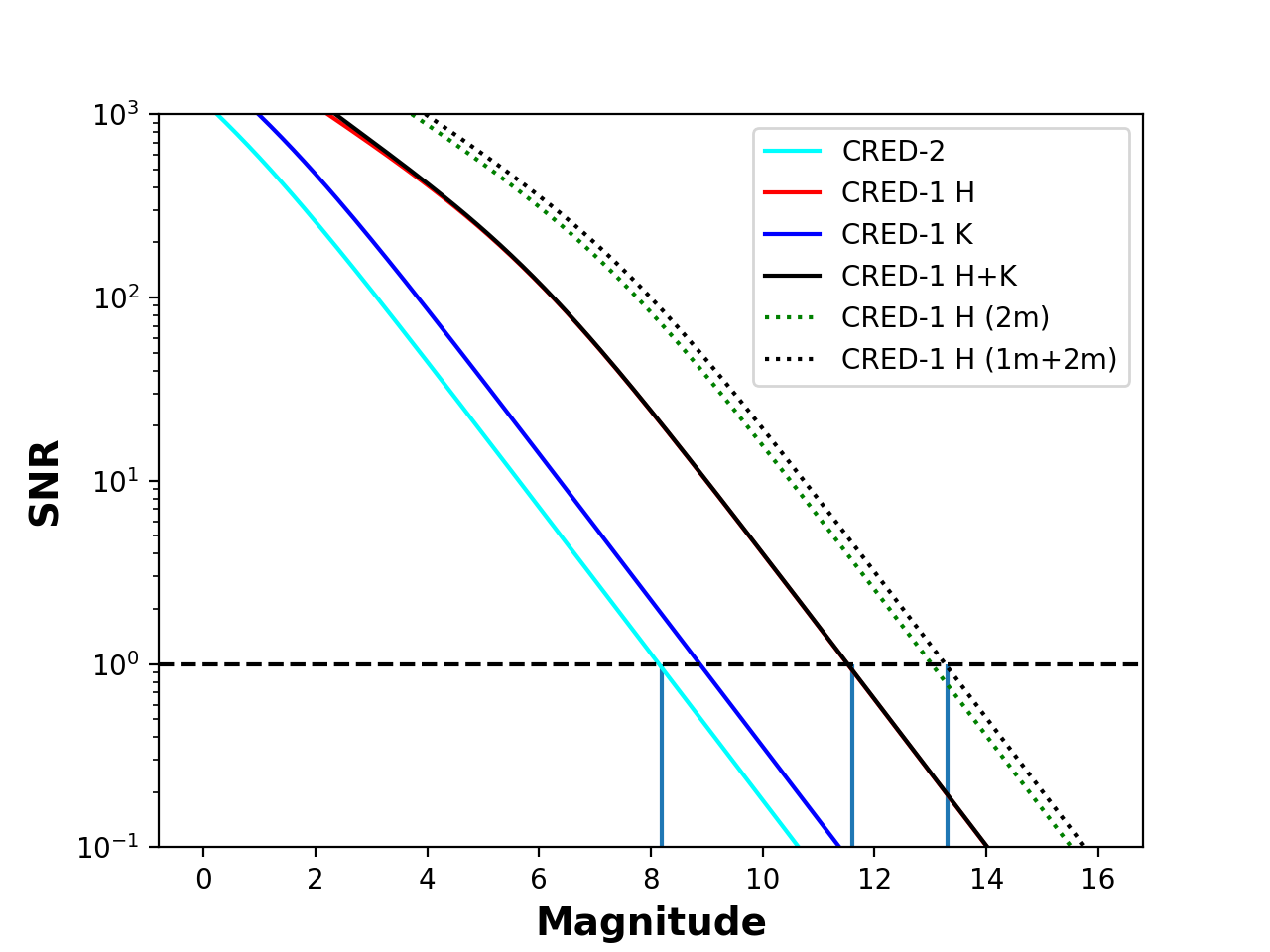
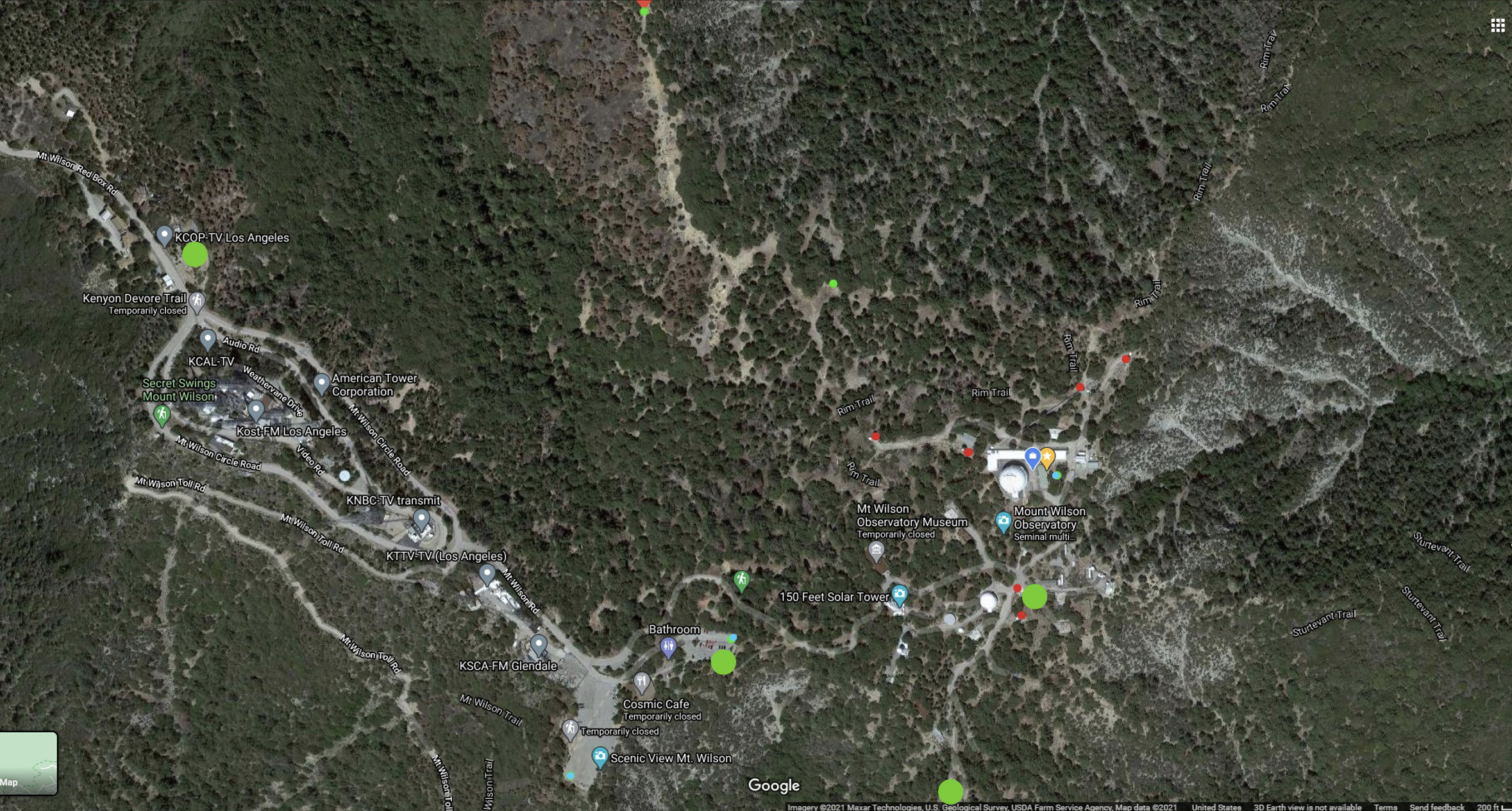
1100m
600m
~17m
S3
S4
W5
Max spatial resolution
• 0.06 mas at R (650 nm)
• 0.16 mas at H (1.67 μm)
• 0.20 mas at K (2.13 μm)
17 to 1100m
- 36 possible baselines: array + CMAP [6+3] (15 simultaneous)

The full Michelson Array would offer 12 total positions, creating 66 possible baselines.
Hal McAlister - Fellow of the AAS 2022

STAFF TRANSITIONS
Theo ten Brummelaar - 2022 Fizeau Lifetime Achievement Award

GSU 2023 Ignite Award to staff

COAS 2024 staff award to Rob Ligon

- Robert Klement appointed as ESO Fellow at VLTI, Chile
- Caleb Abbott, PhD; now postdoc at Univ. Notre Dame
- Julien Dejonghe (OCA) returned to Nice
- Matthew Anderson (10 year) moved to Georgia Tech
- Steve Golden (20 year) retired but will return part-time for site management
- Norm Vargas (12 year) moving from telescope operator to Assistant Site Manager; seeking a new telescope operator
- Welcome to Karolina Kubiak (postdoc, optical lab)
- Welcome to Becky Flores (GSU graduate student, telescope operator)
- Review the current state of capabilities and techniques in optical/IR interferometry
- Discuss quantum-enhanced methods for pushing current limitations on spatial resolution
- Establish collaborations between the astronomy and quantum communities to address science requirements and technical challenges


Charting Quantum Horizons March 2024 - Tucson, AZ
Snowstorm 2023
Road access was cut off for 12 days stranding a dedicated CHARA group








NOAO open access time
- 352 proposals submitted since 2010
- 101 unique OA PIs from 73 distinct institutions
-
dedicated to community growth in US and beyond
-
Rob Ligon - talk up next (on behalf of Rainer Koehler)
- Cyprien Lanthermann- Silmaril
- Peter Tuthill- Silmaril data
- Narsi Anugu- CHARA delay lines
- nic scott - CMAP enclosure
- Noura Ibrahim - MIRCX/Mystic upgrades
- Alyssa Mayer - CHARIOT
- Denis Mourard - SPICA
- John Monnier - high precision with MIRC-X/Mystic

CHARA @ SPIE








Conclusions
- The CHARA Array is now better than ever thanks to major accomplishments since last SPIE
- New observational programs possible with improved beam combiners and 7th telescope
- Building new collaborations and improving outreach
- CHARA as a center for technical innovation and experiments (CQH)

[1] Eisenhauer, F., Monnier, J. D., and Pfuhl, O., “Advances in Optical/Infrared Interferometry,” 61, 237–285 (Aug. 2023).
[2] Ridgway, S. and Schaefer, G., “The NOIRLab/CHARA Connection Marks Decadal Milestones Up to 40 Years,” The NOIRLab Mirror 5, 36 (Aug. 2023).
[3] Gies, D. R., Anderson, M. D., Anugu, N., ten Brummelaar, T. A., Castillo, V., Farrington, C. D., Golden, S., Jones, J. W., Klement, R., K ̈ohler, R., Lanthermann, C., Ligon, E. R., Majoinen, O., McAlister, H. A., Ridgway, S. T., Schaefer, G. H., Scott, N. J., Turner, N. H., Vargas, N. L., Webster, L., and Woods, C., “Recent technical and scientific highlights from the CHARA Array,” in [Optical and Infrared Interferometry and Imaging VIII ], M ́erand, A., Sallum, S., and Sanchez-Bermudez, J., eds., Society of Photo-Optical Instrumentation Engineers (SPIE) Conference Series 12183, 1218303 (Aug. 2022).
[4] Yu, J., Khanna, S., Themessl, N., Hekker, S., Dr ́eau, G., Gizon, L., and Bi, S., “Revised Extinctions and Radii for 1.5 Million Stars Observed by APOGEE, GALAH, and RAVE,” 264, 41 (Feb. 2023).
[5] Korolik, M., Roettenbacher, R. M., Fischer, D. A., Kane, S. R., Perkins, J. M., Monnier, J. D., Davies, C. L., Kraus, S., Le Bouquin, J.-B., Anugu, N., Gardner, T., Lanthermann, C., Schaefer, G. H., Setterholm, B., Brewer, J. M., Llama, J., Zhao, L. L., Szymkowiak, A. E., and Henry, G. W., “Refining the Stellar Parameters of τ Ceti: a Pole-on Solar Analog,” 166, 123 (Sept. 2023).
[6] Konstantinova-Antova, R., Georgiev, S., L`ebre, A., Palacios, A., Morin, J., Bogdanovski, R., Abbott, C., Baron, F., Auri`ere, M., Drake, N. A., Tsvetkova, S., Josselin, E., Paladini, C., Mathias, P., and Zamanov, R., “A long-term study of the magnetic field and activity in the M giant RZ Ari. Magnetism and planet engulfment in a fairly evolved star?,” 681, A36 (Jan. 2024).
[7] Caballero, J. A., Gonz ́alez- ́Alvarez, E., Brady, M., Trifonov, T., Ellis, T. G., Dorn, C., Cifuentes, C., Molaverdikhani, K., Bean, J. L., Boyajian, T., Rodr ́ıguez, E., Sanz-Forcada, J., Zapatero Osorio, M. R., Abia, C., Amado, P. J., Anugu, N., B ́ejar, V. J. S., Davies, C. L., Dreizler, S., Dubois, F., Ennis, J., Espinoza, N., Farrington, C. D., L ́opez, A. G., Gardner, T., Hatzes, A. P., Henning, T., Herrero, E.,
Herrero-Cisneros, E., Kaminski, A., Kasper, D., Klement, R., Kraus, S., Labdon, A., Lanthermann, C., Le Bouquin, J. B., L ́opez Gonz ́alez, M. J., Luque, R., Mann, A. W., Marfil, E., Monnier, J. D., Montes, D., Morales, J. C., Pall ́e, E., Pedraz, S., Quirrenbach, A., Reffert, S., Reiners, A., Ribas, I., Rodr ́ıguez-L ́opez, C., Schaefer, G., Schweitzer, A., Seifahrt, A., Setterholm, B. R., Shan, Y., Shulyak, D., Solano, E., Sreenivas, K. R., Stef ́ansson, G., St ̈urmer, J., Tabernero, H. M., Tal-Or, L., ten Brummelaar, T., Vanaverbeke, S., von Braun, K., Youngblood, A., and Zechmeister, M., “A detailed analysis of the Gl 486 planetary system,” 665, A120 (Sept. 2022).
[8] Martin, R. G., Lubow, S. H., Vallet, D., Anugu, N., and Gies, D. R., “AC Her: Evidence of the First Polar Circumbinary Planet,” 957, L28 (Nov. 2023).
[9] Stuber, T. A., Kirchschlager, F., Pearce, T. D., Ertel, S., Krivov, A. V., and Wolf, S., “How much large dust could be present in hot exozodiacal dust systems?,” 678, A121 (Oct. 2023).
[10] Anugu, N., Baron, F., Gies, D. R., Lanthermann, C., Schaefer, G. H., Shepard, K. A., Brummelaar, T. t., Monnier, J. D., Kraus, S., Le Bouquin, J.-B., Davies, C. L., Ennis, J., Gardner, T., Labdon, A., Roettenbacher, R. M., Setterholm, B. R., Vollmann, W., and Sigismondi, C., “The Great Dimming of the Hypergiant Star RW Cephei: CHARA Array Images and Spectral Analysis,” 166, 78 (Aug. 2023).
[11] Labdon, A., Kraus, S., Davies, C. L., Kreplin, A., Zarrilli, S., Monnier, J. D., Le Bouquin, J.-B., Anugu, N., Setterholm, B., Gardner, T., Ennis, J., Lanthermann, C., ten Brummelaar, T., Schaefer, G., and Harries, T. J., “Imaging the warped dusty disk wind environment of SU Aurigae with MIRC-X,” 678, A6 (Oct. 2023).
[12] Ibrahim, N., Monnier, J. D., Kraus, S., Le Bouquin, J.-B., Anugu, N., Baron, F., Brummelaar, T. T., Davies, C. L., Ennis, J., Gardner, T., Labdon, A., Lanthermann, C., M ́erand, A., Rich, E., Schaefer, G. H., and Setterholm, B. R., “Imaging the Inner Astronomical Unit of the Herbig Be Star HD 190073,” 947, 68 (Apr. 2023).
[13] Bourdarot, G., Berger, J. P., Lesur, G., Perraut, K., Malbet, F., Millan-Gabet, R., Le Bouquin, J. B., Garcia-Lopez, R., Monnier, J. D., Labdon, A., Kraus, S., Labadie, L., and Aarnio, A., “FU Orionis disk outburst: Evidence for a gravitational instability scenario triggered in a magnetically dead zone,” 676, A124 (Aug. 2023).
[14] Zarrilli, S. A., Kraus, S., Kreplin, A., Monnier, J. D., Gardner, T., M ́erand, A., Morrell, S., Davies, C. L., Labdon, A., Ennis, J., Setterholm, B., Le Bouquin, J.-B., Anugu, N., Lanthermann, C., Schaefer, G., and ten Brummelaar, T., “Characterising the orbit and circumstellar environment of the high-mass binary MWC 166 A,” 665, A146 (Sept. 2022).
[15] Lanthermann, C., Le Bouquin, J. B., Sana, H., M ́erand, A., Monnier, J. D., Perraut, K., Frost, A. J., Mahy, L., Gosset, E., De Becker, M., Kraus, S., Anugu, N., Davies, C. L., Ennis, J., Gardner, T., Labdon, A., Setterholm, B., ten Brummelaar, T., and Schaefer, G. H., “Multiplicity of northern bright O-type stars with optical long baseline interferometry. Results of the pilot survey,” 672, A6 (Apr. 2023).
[16] De Furio, M., Gardner, T., Monnier, J., Meyer, M. R., Kratter, K., Schaefer, G., Anugu, N., Davies, C. L., Kraus, S., Lanthermann, C., Le Bouquin, J.-B., and Ennis, J., “The Small Separation A-star Companion Population: First Results with CHARA/MIRC-X,” 941, 118 (Dec. 2022).
[17] Torres, G., Schaefer, G. H., Monnier, J. D., Anugu, N., Davies, C. L., Ennis, J., Farrington, C. D., Gardner, T., Klement, R., Kraus, S., Labdon, A., Lanthermann, C., Le Bouquin, J.-B., Setterholm, B. R., and ten Brummelaar, T., “The Orbits and Dynamical Masses of the Castor System,” 941, 8 (Dec. 2022).
[18] Torres, G., Schaefer, G. H., Stefanik, R. P., Latham, D. W., Jones, J., Lanthermann, C., Monnier, J. D., Kraus, S., Anugu, N., ten Brummelaar, T., Chhabra, S., Codron, I., Ennis, J., Gardner, T., Gutierrez, M., Ibrahim, N., Labdon, A., Mortimer, D., and Setterholm, B. R., “Orbits and dynamical masses for the active Hyades multiple system HD 284163,” 527, 8907–8920 (Jan. 2024).
[19] Gardner, T., Monnier, J. D., Fekel, F. C., Le Bouquin, J.-B., Scovera, A., Schaefer, G., Kraus, S., Adams, F. C., Anugu, N., Berger, J.-P., Ten Brummelaar, T., Davies, C. L., Ennis, J., Gies, D. R., Johnson, K. J. C., Kervella, P., Kratter, K. M., Labdon, A., Lanthermann, C., Sahlmann, J., and Setterholm, B. R., “ARMADA. II. Further Detections of Inner Companions to Intermediate-mass Binaries with Microarcsecond Astrometry at CHARA and VLTI,” 164, 184 (Nov. 2022).
[20] Lam, R., Sandquist, E. L., Schaefer, G. H., Farrington, C. D., Monnier, J. D., Anugu, N., Lanthermann, C., Klement, R., Ennis, J., Setterholm, B. R., Gardner, T., Kraus, S., Davies, C. L., and Orosz, J. A., “Precise Age for the Binary Star System 12 Com in the Coma Berenices Cluster,” 166, 29 (July 2023).
[21] Morales, L. M., Sandquist, E. L., Schaefer, G. H., Farrington, C. D., Klement, R., Bedin, L. R., Libralato, M., Malavolta, L., Nardiello, D., Orosz, J. A., Monnier, J. D., Kraus, S., Le Bouquin, J.-B., Anugu, N., ten Brummelaar, T., Davies, C. L., Ennis, J., Gardner, T., and Lanthermann, C., “The Interferometric Binary Cnc in Praesepe: Precise Masses and Age,” 164, 34 (Aug. 2022).
[22] Lester, K. V., Schaefer, G. H., Fekel, F. C., Gies, D. R., Henry, T. J., Jao, W.-C., Paredes, L. A., Hubbard-James, H.-S., Farrington, C. D., Gordon, K. D., Chojnowski, S. D., Monnier, J. D., Kraus, S., Bouquin, J.-B. L., Anugu, N., ten Brummelaar, T., Davies, C. L., Gardner, T., Labdon, A., Lanthermann, C., and Setterholm, B. R., “Visual Orbits of Spectroscopic Binaries with the CHARA Array. IV. HD 61859, HD 89822, HD 109510, and HD 191692,” 164, 228 (Dec. 2022).
[23] Klement, R., Schaefer, G. H., Gies, D. R., Wang, L., Baade, D., Rivinius, T., Gallenne, A., Carciofi, A. C., Monnier, J. D., M ́erand, A., Anugu, N., Kraus, S., Davies, C. L., Lanthermann, C., Gardner, T., Wysocki, P., Ennis, J., Labdon, A., Setterholm, B. R., and Le Bouquin, J.-B., “Interferometric Detections of sdO Companions Orbiting Three Classical Be Stars,” 926, 213 (Feb. 2022).
[24] Klement, R., Baade, D., Rivinius, T., Gies, D. R., Wang, L., Labadie-Bartz, J., Ticiani dos Santos, P., Monnier, J. D., Carciofi, A. C., M ́erand, A., Anugu, N., Schaefer, G. H., Le Bouquin, J.-B., Davies, C. L., Ennis, J., Gardner, T., Kraus, S., Setterholm, B. R., and Labdon, A., “Dynamical Masses of the Primary Be Star and Secondary sdB Star in the Single-lined Binary κ Dra (B6 IIIe),” 940, 86 (Nov. 2022).
[25] Klement, R., Rivinius, T., Gies, D. R., Baade, D., M ́erand, A., Monnier, J. D., Schaefer, G. H., Lanthermann, C., Anugu, N., Kraus, S., and Gardner, T., “The CHARA Array Interferometric Program on the Multiplicity of Classical Be Stars: New Detections and Orbits of Stripped Subdwarf Companions,” 962, 70 (Feb. 2024).
[26] Wang, L., Gies, D. R., Peters, G. J., G ̈otberg, Y., Chojnowski, S. D., Lester, K. V., and Howell, S. B., “The Detection and Characterization of Be+sdO Binaries from HST/STIS FUV Spectroscopy,” 161, 248 (May 2021).
[27] Gies, D. R., Wang, L., and Klement, R., “Gamma Cas Stars as Be+White Dwarf Binary Systems,” 942, L6 (Jan. 2023).
[28] Kishimoto, M., Anderson, M., ten Brummelaar, T., Farrington, C., Antonucci, R., H ̈onig, S., Millour, F., Tristram, K. R. W., Weigelt, G., Sturmann, L., Sturmann, J., Schaefer, G., and Scott, N., “The Dust Sublimation Region of the Type 1 AGN NGC 4151 at a Hundred Microarcsecond Scale as Resolved by the CHARA Array Interferometer,” 940, 28 (Nov. 2022).
[29] Setterholm, B. R., Monnier, J. D., Le Bouquin, J.-B., Anugu, N., Ennis, J., Jocou, L., Ibrahim, N., Kraus, S., Anderson, M. D., Chhabra, S., Codron, I., Farrington, C. D., Flores, B., Gardner, T., Gutierrez, M., Lanthermann, C., Majoinen, O. W., Mortimer, D. J., Schaefer, G., Scott, N. J., ten Brummelaar, T., and Vargas, N. L., “MYSTIC: a high angular resolution K-band imager at CHARA,” Journal of Astronomical Telescopes, Instruments, and Systems 9, 025006 (Apr. 2023)
References

Diameters of Stars
Korolik used CHARA/MIRC-X observations together with time series spectroscopy and photometry to explore the properties of the nearby solar-analog star tau Ceti. They determined an
accurate angular diameter of of 2.019 ± 0.012 mas and a rotation period of 46 ± 4 days.
The combined analysis indicates that we observe the star from an almost pole-on orientation with an estimated rotational inclination of 7° ± 7°. The rotational axis is misaligned withthe surrounding debris disk.
Stellar radii grow with age, so angular diameter measurements of upper main sequence stars offer an important means to estimate stellar age through comparisons with model predictions.
Konstantinova used CHARA measurements of the angular diameter of the magnetically active star RZ Ari to determine the age of this M-giant star. They suggest that the star's fast rotation and strong magnetic dynamo might be due to the engulfment of a planet.

Exozodi Systems
CHARA interferometry has led to the detection of hot exozodiacal dust around A- to G-type stars that is associated with a near-infrared emission excess. Stuber used CHARA Array and other data to study the size distribution of such exozodiacal dust, and they present evidence that large grains (>10 µm) contribute significantly to the flux budget in many cases.

Binary & Multiple Stars
Lanthermann is making a binary star survey of the massive O-type stars in order to document their high multiplicity rate and to discover close but non-interacting systems for orbital mapping and mass determination. Their first paper reports on 29 systems in which they resolved 19 companions in 17 different systems with angular separations between 0.5 and 50 mas.
A binary survey of intermediate-mass A-type stars within 80 pc is underway by Defurio.
Preliminary results from MIRC-X on 27 A-type primaries with estimated masses between 1.44 and 2.49 M☉ and ages of 10-790 Myr, led to the detection of five companions, which yields a companion frequency of ~0.19 over mass ratios of 0.25 - 1.0 and projected separations of 0.288 - 5.481 AU.

Survey 29 Massive O-Stars
Resolved 19 companions
Separations:
0.5 - 50 mas
Multiplicity fraction
fm = 0.59 ± 0.09
Average number of companions
fc = 0.66 ± 0.13

Binary and Multiple Stars
A number of X-ray bright Be stars known as gam Cas analogues are known spectroscopic binaries for which Klement did not detect the companion.
These systems may represent an advanced stage in which the companion is a very faint, proto-white dwarf, so that they are the high-mass extension of cataclysmic variable stars.
Predicted magnitude differences for Be + sdO binaries


Binary and Multiple Stars
The Coma Bernices star cluster is the home of the binary system 12 Com, which consists of a G7 giant and an A3 dwarf at the cluster turnoff. A new precise orbit from CHARA observations made by lam who also obtained radial velocity measurements that lead to masses of 2.64 ± 0.07 M⊙ and 2.10 ± 0.03 M⊙ for the giant and dwarf, respectively.
lam were able to resolve the giant component, and they derived a radius of 9.12 ± 0.12 R⊙ and a cluster age of 533 ± 42 Myr.


Binary and Multiple Stars
Morales used CHARA to investigate eps Cnc, which is a binary star and the brightest member of the Praesepe cluster. They derived radial velocity and interferometric measurements
to determine the component masses, 2.420 ± 0.008 M⊙ and 2.226 ± 0.004 M⊙.
The positions of the components in the HR-diagram yields an age of 637 ± 19 Myr based upon MIST model isochrones.


Binary and Multiple Stars
Kathryn Lester completed her survey of intermediate mass binaries using combined CHARA CLIMB and MIRC-X interferometry and high dispersion spectroscopy to obtain orbits, masses (accurate to ≤ 2\% uncertainty in general), effective temperatures, and radii. Lester reports on results for four spectroscopic binary stars, HD 61859, HD 89822, HD 109510, and HD 191692. The properties of the stars are compared to evolutionary tracks from the MESA and Yale-Yonsei stellar evolution codes, and differences were found for some of the chemically peculiar A-star components.

Disks Around Young Stars
Disk accretion in YSOs can result from disk instabilities that drive huge flux outbursts.
Bourdarot investigated the kinds of instabilities that occur in the proto-type
object FU~Orionis. They gathered interferometric observations from CHARA MIRC-X and CLIMB
together with those from VLTI PIONIER and GRAVITY and other archival sources to document the
slow decrease in apparent disk size from 1998 to 2020. They find that the temporal variations
are consistent with an outburst caused by a magneto-rotational instability in the disk that
was triggered by a gravitational instability at the outer-edge of the disk ``dead zone.''


Disks Around Young Stars
Young stars in binary systems are particularly attractive targets for study because individual
masses can often be determined. Zarrilli investigated the single-lined spectroscopic binary star MWC 166A by combining multiple-epoch interferometry from CHARA and VLTI with a large collection of archival radial velocity measurements. This system resides in the CMa OB1 association at a distance of about 1 kpc. Zarrilli find that the primary is a MS B star with a circumstellar disk, while the secondary is a Herbig Be object that is still contracting onto the main sequence. The masses are 12.2 ± 2.2 M⊙ and 4.9 ± 0.5 M⊙, respectively, and the system is about 0.7 Myr old.

Image an exoplanet during transit
There are some 250 known exoplanets with host stars accessible to CHARA.
The new baselines will enable resolution of solar-like stars out to about 70pc in H-band.
Numerical simulations of the transiting hot-Jupiter in HD189773 indicate that the silhouette of the planet can be measured in long baseline observations made during transits.
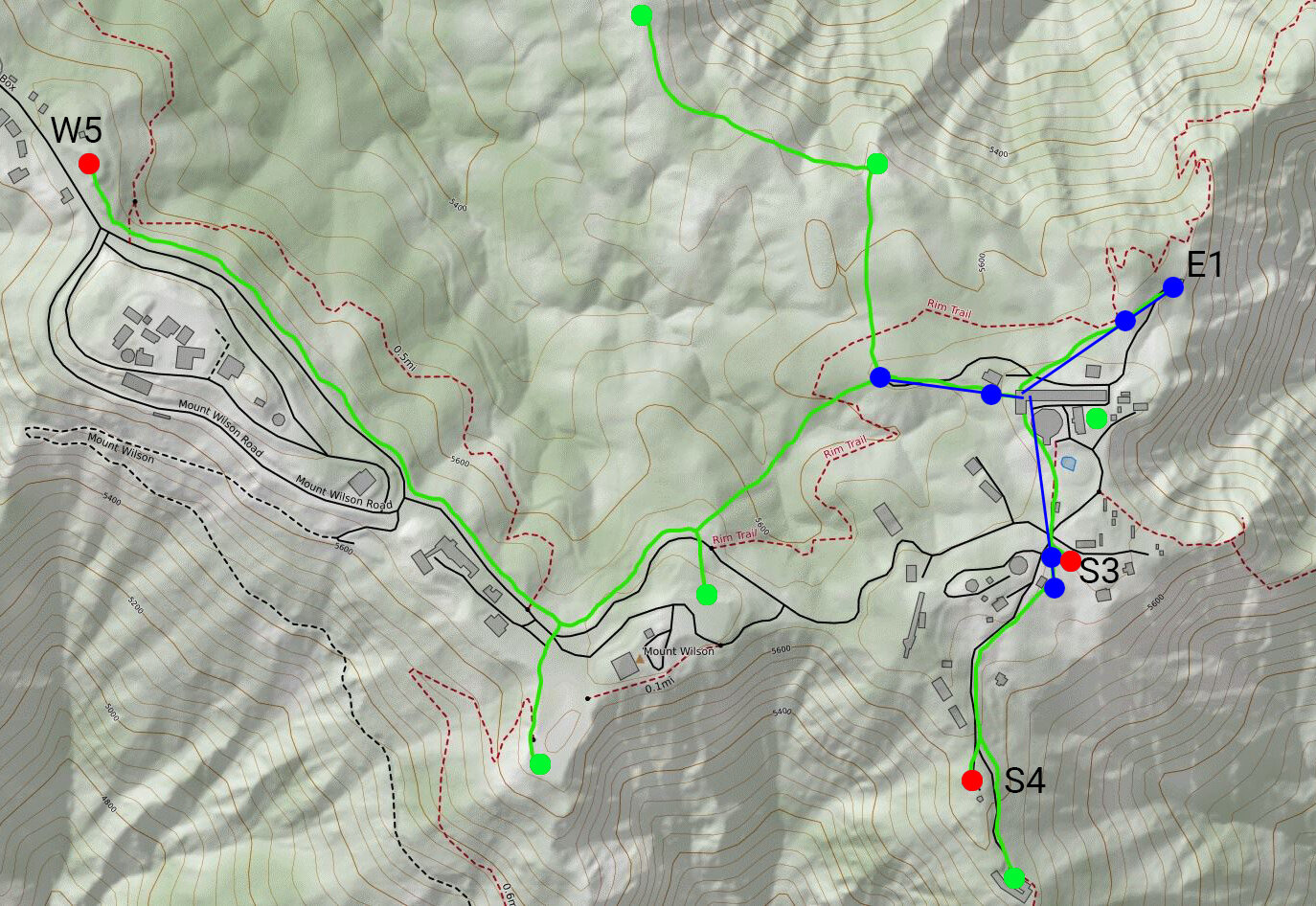
CHARA-SPIE
By Nic Scott
CHARA-SPIE
- 952



